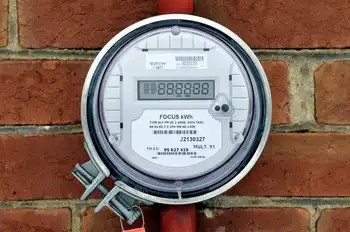UK to get first commercial geothermal power plant
By Industrial Info Resources
CSA Z462 Arc Flash Training - Electrical Safety Essentials
Our customized live online or in‑person group training can be delivered to your staff at your location.

- Live Online
- 6 hours Instructor-led
- Group Training Available
The Eden Project is situated on the Cornish coast in southern England, and EGS believes that the underlying granite rock holds huge untapped potential for adding to the UK's power mix.
The proposed plant will aim for an output of 3 megawatts (MW), but EGS engineers claim that geothermal energy stored in the rocks below Cornwall could eventually provide up to 10% of the UK's entire electricity requirements. An existing geothermal plant in Southampton supplies heat to public buildings but not electricity.
The news comes as Germany brought its largest geothermal power plant online in Unterhaching, a town on the outskirts of Munich. The plant, which has been in development for the past five years, will pump superheated water from a hot spot 3,500 metres under the earth to a 3.36-MW electricity turbine. One of EGS Energy's partners, BESTEC GmbH, has already designed and built the 2.9-MW geothermal plant in Landau, western Germany. The UK is lagging behind, but support among the government's opposition political parties for geothermal investment is vocal, with promises of serious investment.
U.S. President Obama pledged $350 million to support geothermal development and said: "We have a choice. We can remain the world's leading importer of oil, or we can become the world's leading exporter of clean energy. We can hand over the jobs of the future to our competitors, or we can confront what they have already recognized as the great opportunity of our time: The nation that leads the world in creating new sources of clean energy will be the nation that leads the 21st century global economy."
The power plant at Eden Project will consist of a two-borehole system — one injection well and one production well — both about 3-4 kilometers deep. Water would be circulated between the bottoms of the two wells, where it will be heated by the hot rocks before being returned to the surface at approximately 150 degrees Celsius. There, it will drive a binary turbine to create electricity at a planned capacity of 3 MW. The partners also hope to use the hot water for community heating, before it is returned to the reservoir. The project is expected to be up and running by 2012.
Geothermal technology is still in its infancy, but it offers some key advantages over wind power in that the electricity produced is consistent and not dependent on wind, while its visual impact is minimal compared to wind turbines. In addition, beyond the initial investment costs, there are no fuel costs like those associated with coal, gas or nuclear plants.
"We are lucky to have found in the Eden Project the perfect partner to take engineered geothermal systems to commercial reality from academic exercise, here in the UK where many of the skills that we bring to bear originated," said Roy Baria, Technical Director of EGS Energy. "With the geology in the vicinity of the Eden Project being ideal for creating our power plant and its reservoir, we would not only expect to be able to supply virtually all of the Eden Project's power and heat requirements but generate surplus power that could be fed into the grid to help meet the governments CO2 reduction and renewable generation targets."
Tim Smit, Chief Executive of the Eden Project, added: "We are excited to be partnering with EGS Energy in this project. We will be working closely with their team to bring to reality this pioneering power plant. Powering the Eden Project site from a renewable source of energy is clearly a priority for us and we are very pleased to have the opportunity to bring our unique vision and environmental skills to the project alongside EGS Energy's experience and skills in engineering geothermal systems."











